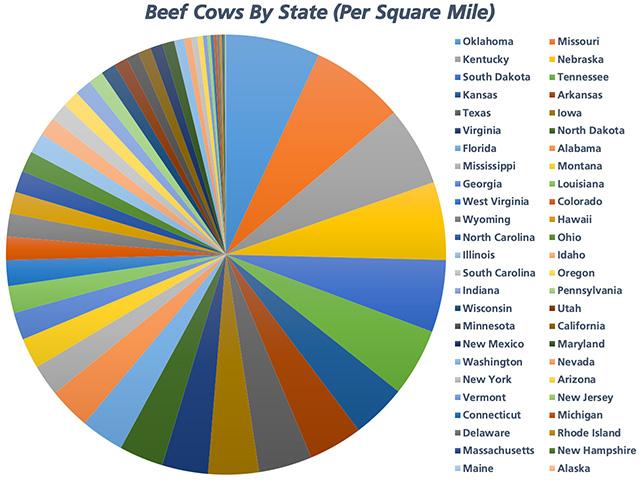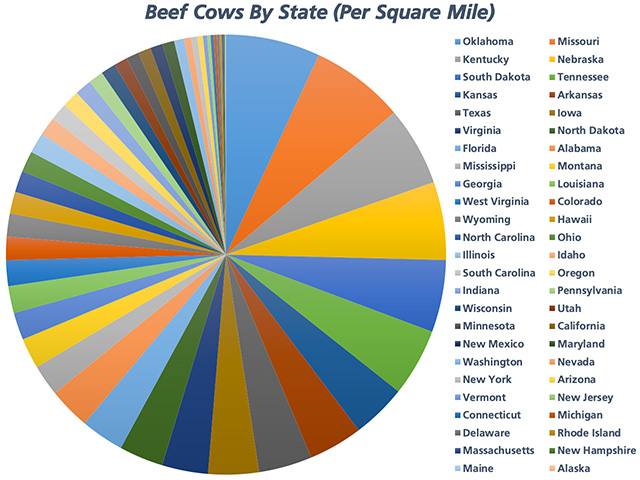Sort & Cull
Most of Us Live in 'Cattle Country'
On a quick family drive to Louisiana over Labor Day weekend, it became very evident just how far-reaching the cattle industry is. This is something that is not new or surprising to me -- beef cow numbers are evident in every state of the nation. However, this trip was a good reminder of just how uniform and diverse the cattle industry is, even at a time when "social distancing" is the norm, and wide-ranging travel and movement outside of our normal every day routine is limited.
Looking at beef production and beef numbers on a "cow density" basis is eye-opening because it breaks the pattern and takes the focus away from total numbers of cows in each state. Texas, which has more than double the beef cows within its borders than any other individual state, is not in the top five states when measured by cow density -- it's No. 8 on the list. Oklahoma has the most cows per square mile in the nation, followed by Missouri, Kentucky, Nebraska and South Dakota.
Most people don't think of Hawaii as a cattle-producing state, but based on cow density, it comes in within the top 25 in the nation; that's slightly less than Wyoming and ahead of states like Illinois and Ohio.
P[L1] D[0x0] M[300x250] OOP[F] ADUNIT[] T[]
The pin-wheeled appearance of the adjoining chart helps to represent the wide geographical scope of beef production throughout the nation and build appreciation for others in completely different situations than us.
Cattle producers know and appreciate just how diverse the industry is throughout the nation, but diversity can be quickly overlooked by the general population. It can be argued that beef cattle production is the most diverse and wide-reaching sectors of agriculture, if not all business segments. Active beef producers are made up of a wide range of geographical, social, economic and racial differences, all with the goal of feeding our world by turning otherwise unused natural resources into high quality and affordable beef.
As you move around the nation, cattle operations (and even the cattle) look different as they take advantage of climate and regional differences. Even cattle producers themselves have a wide variety of professions: they include ranchers, farmers, teachers, nurses, doctors, bankers, retail clerks, delivery drivers, factory workers and many more. But unlike many industries, the love and desire of raising and owning cattle is their top priority.
The cattle industry cannot, and should not, be pigeonholed into a stereotype. Yet no matter how different producers and operations may look, there is a deep unity between producers no matter where the operation is located. The one characteristic that does flow through all producers is the deep love and care for their animals, the land they are raised on and the desire to feed the nation with their high-quality product.
Concerns of beef prices, feed quality, weather, environmental concern, herd health, breeding programs, neighbor relations and good fences are continually on the mind of cattle producers, no matter what state they reside in. So, the next time you drive by a herd of cows content in their pasture environment, try to remember just how common and refreshing this sight is throughout the country.
Rick Kment can be reached at Rick.Kment@dtn.com
© (c) Copyright 2020 DTN, LLC. All rights reserved.






Comments
To comment, please Log In or Join our Community .